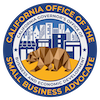In lean start-ups the founding entrepreneurs often function as the company’s salesperson. This can be challenging for those that are uncomfortable in a selling environment. Rest assured, it does not need to be so daunting. Success in sales is no different than any pursuit. There is a systematic method that can be followed to achieve the desired outcome. Those activities once defined, can be monitored, measured and improved upon to increase performance.
Sales processes can be broken into three components: lead generation, lead management and prospect conversion. The following is a series of questions concerning each of the three processes. Review the questions and customize a list to your organization. Ask each person involved in the selling process to submit their answers. Then have a team building meeting where tribal knowledge can be shared, to the benefit of all involved. The more consistent and streamlined the sales process—the greater potential for overall company success.
Lead Generation:
1. How are you generating leads?
2. Where are you getting customers?
3. What percentage of leads convert to prospects?
4. Are you asking for referrals?
Lead generation is the first step and a crucial aspect of the process. The ability to convert prospects to customers is based on the quality of the lead. Lead generation can take on many forms: cold calls, referrals, mailings, online forms and tradeshows. As a company, you have to determine your best source of quality leads.
If you already have customers, trace the sales pathway backwards to determine how they first learned about your company. Many times the most useful information can be gained by analyzing historical data. Maybe you believe many of your clients were obtained through networking, however upon further examination, you might learn that the majority of your clients came from speaking engagements or exhibition events. If that is the case for you, then focus your sales efforts toward obtaining speaking engagements rather than attending networking functions.
When you audit your sales pathway, you will learn where many of your customers come from, then reposition your investments to fit the appropriate channels. Once you know your channels, the result will likely be that your customer acquisition cost will decrease significantly with savings going directly to the bottom line.
Referrals are one of your company’s greatest assets. Does your company have a process in place to ask for referrals? You may be missing out on additional sales opportunities by not asking customers and partners for a referral.
Measuring the percentage of leads that convert to prospects is as important as measuring the amount of prospects that become customers. This early stage measurement examines the effectiveness of your lead generation process. Starting with a qualified lead provides a better chance for conversion.
Lead Management:
5. What is your process for organizing leads?
6. How fast are you following up on leads?
7. How do you manage the follow-up process?
Independent of the method you use to generate leads, you must have a detailed plan for follow up. Studies have shown that companies take on average 48 hours to respond to an Internet generated lead. Smaller companies do not have the luxury of a dedicated sales force and owners can easily get distracted by daily emergencies.
Anything can be achieved if an intelligent plan is in place. Try to set aside a specific time each day/week for lead follow-up. Prospects will be more patient if they receive some type of response. At the least, have a computer generated message stating an expected response time.
Lead Conversion:
8. What criteria do you use to qualify prospects?
9. At what point in the sales cycle do you determine if the prospect is qualified?
10. What percentage of qualified prospects convert to clients?
Wasting time on a prospect that has no intention of purchasing is missed opportunity for the one that does. Knowing when to cut ties and move on is a learned sales skill. Those that succeed have an internal gauge that says, it’s time to move on.
“Now or in the immediate future, the prospect must be able and willing to purchase your product/service at the price point you are selling”.
Are you properly investing your time with qualified prospects? What specific buying criteria must exist for a prospect to convert to a customer? It is advantageous to write down the top five. Are they able to afford your product? Are they willing to purchase now? This list can be viewed repeatedly when going through the prospecting process.
By calculating your conversion rate from prospect to customer you have a method to audit your processes. Peter Drucker once famously said, “If you don’t measure it, you can’t manage it.” This same principle for management can be applied to your sales strategy.
If you adopt the methodology that selling is a companywide responsibility you will have a selling machine that will constantly be producing new customers. This does not happen mysteriously; it happens as the result of planning and implementing processes. Invest some time developing a sales strategy, it will be time well spent.
Special Thanks to: Lori Williams for her special content contribution. Lori is a business advisor at the Pasadena City College SBDC specializing in strategic planning, finance, marketing and operations. For more information about the PCC SBDC team please visit: http://pccsbdc.sbdc.riefmedia.com/about/staff/





